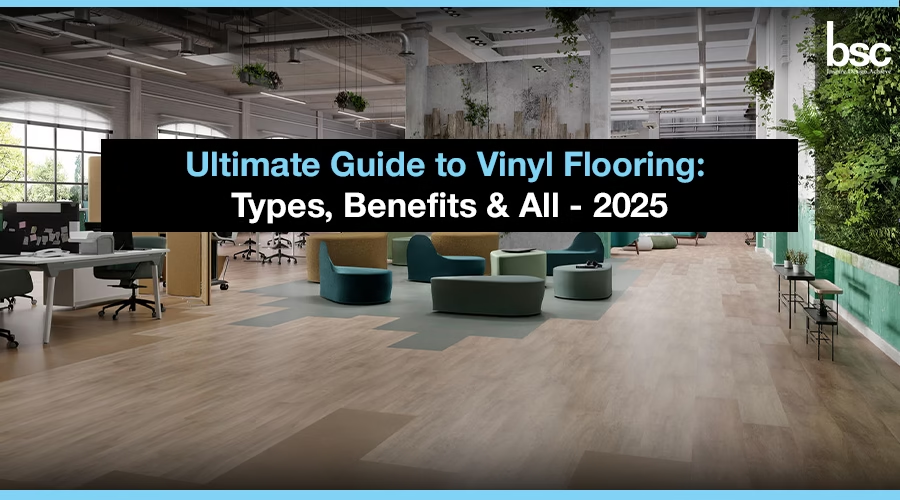Vinyl flooring has quietly become one of the most popular flooring options in modern commercial spaces: it can mimic the look of oak, marble, or encaustic tiles, but it’s more durable, easier to maintain, and much more affordable. Vinyl offers a great blend of design, durability, and price, whether you’re looking to revamp your kitchen, decorate a commercial space, or find a moisture-resistant finish for your basement.
This guide will explain the differences between the various types of vinyl flooring (LVT, LVP, SPC, WPC, sheet vinyl), their advantages and disadvantages, how to choose the right product for each room, step-by-step installation instructions, maintenance tips to extend its lifespan, pricing and ROI, and answers to the most common questions from buyers.
Ultimately, you’ll learn which vinyl product is right for your needs and how to achieve the best results, whether you choose to install it yourself or hire a professional.
What is Vinyl Flooring?
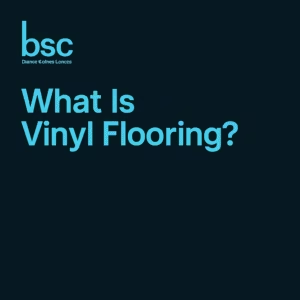
Vinyl flooring is a very popular flooring option that offers numerous advantages. Vinyl is a synthetic material, whereas hardwood or stone are natural materials. It is primarily made of polyvinyl chloride (PVC) resin, plasticizers, and stabilizers. This unique composition makes it durable, stylish, and economical—qualities that are rarely found in other flooring materials.
Modern vinyl flooring consists of several layers, and each layer has its own purpose.
- Backing layer – This provides support and stability to the flooring.
- Core layer – This determines the rigidity and water resistance (flexible in sheet vinyl, rigid in SPC/WPC).
- Design layer – A beautiful printed image that replicates the look of wood, stone, or tile.
The main reasons for the popularity of vinyl are as follows:
- Versatility – It can replicate the look and texture of wood, tile, marble, and even an industrial style.
- Moisture resistance – Most vinyl flooring is water-resistant, and SPC/WPC products are completely waterproof.
- Affordability – It offers a high-quality look at a lower price than hardwood or stone.
- Ease of installation – With click-lock, glue-down, or loose-lay options, it’s easy for both DIY enthusiasts and professionals.
Why Vinyl? Core Benefits at a Glance
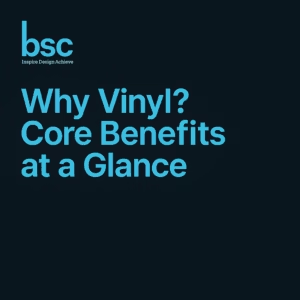
Since it addresses many common flooring problems, vinyl flooring has become very popular. Its advantages in terms of durability, cost, and other factors make it an attractive option for both residential and commercial construction projects.
The following are some impressive features:
- Waterproof options – SPC/WPC (rigid-core) and some sheet vinyl flooring are waterproof, making them ideal for kitchens, bathrooms, and basements.
- Durability – With a thickness ranging from 6 to 30 mils, vinyl flooring is durable enough to withstand heavy foot traffic, scratches, and stains.
- Low maintenance – Simply sweep or mop; no waxing or polishing required.
- Design versatility – Advanced printing and embossing techniques allow vinyl flooring to mimic the look of hardwood, stone, ceramic, or feature abstract patterns.
- Comfortable underfoot – WPC vinyl is more relaxed than rigid tile or stone and offers better sound insulation.
- Affordable – It provides a high-end look without the high cost of installation or materials.
- Easy installation – The floating click system is easy to install, while the glue-down method provides stability for larger areas.
Additional benefits include:
- Color retention – The coating protects against fading from sunlight.
- Easy cleaning – Surfaces are easy to clean, maintaining a clean and hygienic environment.
- Resale value – Durable and attractive vinyl interiors can enhance the property’s value with a stylish look.
Vinyl Categories & How They Differ
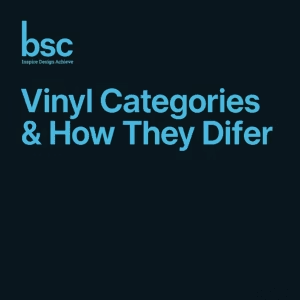
Vinyl flooring isn’t a one-size-fits-all product. It comes in many different types, each designed to suit specific needs, styles, and budgets. Understanding these different types will help you choose the right option for your space.
Main Categories:
- Luxury Vinyl Plank (LVP): This product resembles hardwood planks in appearance and length. It’s ideal for living rooms and bedrooms, where a wood-like look is desired.
- Luxury Vinyl Tile (LVT): This looks like stone or ceramic tile and comes in square or rectangular shapes. It’s suitable for kitchens, bathrooms, or commercial spaces.
- Sheet Vinyl: This comes in large rolls that are installed as a single sheet. It’s ideal for bathrooms and laundry rooms, offering waterproof and seamless coverage.
- Vinyl Composition Tile (VCT): This is commonly used in retail areas, hospitals, and schools. It’s very durable, but requires regular waxing and polishing for maintenance.
- Rigid core vinyl (SPC/WPC):
- SPC (Stone-Plastic Composite): This material is very dense and dent-resistant, making it suitable for high-traffic areas.
- WPC (Wood-Plastic Composite): It is softer and absorbs sound better, making it the best choice for residential use.
How they differ:
- Appearance: LVP/LVT offers realistic wood or stone patterns, sheet vinyl has consistent patterns, and VCT is more utilitarian.
- Performance: SPC is best for stability, WPC for comfort, and sheet vinyl for moisture resistance.
- Installation: Click-lock (LVP/LVT/SPC/WPC), glue-down (VCT), or loose-lay (sheet).
- Usage: SPC is suitable for basements, LVT for offices, WPC for residential areas, sheet vinyl for wet areas, and VCT for institutions.
Buying Factors: What Actually Matters
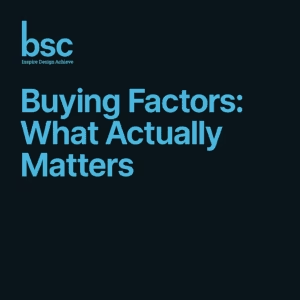
Choosing the right vinyl flooring isn’t just about style; it’s also about performance, durability, and comfort. Knowing the most important factors to consider when buying is essential to ensure you select the right option for your space.
Wear Layer Thickness
The transparent protective layer on top of the vinyl provides protection against wear and tear. This layer offers protection from scratches, dents, and stains.
- Residential areas: A 12-20 mil thickness is ideal.
- High-traffic/commercial areas: A 20-30 mil thickness ensures durability.
- Thin (6-8 mil) layers are only suitable for low-traffic areas.
Overall Thickness
Thickness is measured in millimeters and affects the comfort, sound absorption, and ability to conceal minor imperfections on the floor surface.
- Typical thickness: 2 mm – 8 mm (Underlayment should be installed separately, not glued).
- For added stability and impact resistance, rigid core (SPC/WPC) flooring is also available in thicker versions.
Core Type
- SPC (Stone-Plastic Composite): This is the most stable and dent-resistant option, suitable for high-traffic areas and areas prone to moisture.
- WPC (Wood-Plastic Composite): This is softer, more comfortable underfoot, and has good sound absorption properties – making it ideal for residential areas.
Finish & Embossing
- The Embossed-in-Register (EIR) texture replicates the look of genuine wood or stone grain.
- Matte or low-gloss finishes reduce shine and increase slip resistance.
Additional Considerations
- The underlayment or backing material provides comfort and reduces noise.
- The R-rating (residential/commercial grade) ensures that it is suitable for your area.
- Ease of installation depends on the edge profile and locking system.
You can choose vinyl flooring that suits your needs. Consider factors such as style, durability, and comfort, including the wear layer, thickness, core material, finish, and grade.
Where to Use Which Vinyl?
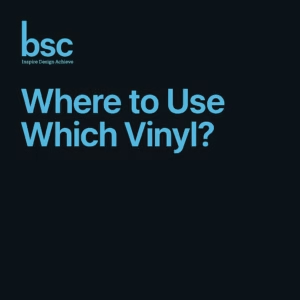
Choosing the right type of vinyl flooring for the right room will ensure both durability and aesthetic appeal. Here’s a practical guide:
Kitchen
- Waterproof LVP/LVT or SPC flooring is not damaged by spills or accidental contact with water, even from chairs being moved.
- With a thickness of 12-20 mils, this flooring is also resistant to wear and scratches.
- It can be installed using a click-lock system or adhesive, ensuring a stable surface, even around appliances.
Bathroom & Laundry
- Waterproof rigid-core planks covered with a vinyl sheet are the best option.
- Welded seams or a waterproof interlocking system protect against moisture damage.
- Choose a matte finish to reduce slippage.
Basement
- Waterproof or moisture-resistant SPC planks are suitable for use on damp surfaces.
- Install them over a suitable moisture barrier, if necessary.
- WPC flooring feels warm underfoot, but it’s important to monitor moisture levels.
Living Rooms & Bedrooms
- Thicker or heavier LVP creates a stable, resilient surface.
- The embossed texture provides a natural, wood-like appearance.
- Low-maintenance surfaces help keep the space looking attractive and clean.
High-Traffic Commercial Spaces
- HFT or high-mil wear layer LVT can easily withstand heavy foot traffic.
- A glue-down installation makes it even more durable for long-term use.
- Regular maintenance, such as cleaning and wiping with a damp cloth, extends its lifespan.
Key Points
- Choose the type of vinyl flooring based on your needs regarding moisture resistance, durability, and comfort.
- Solid core and waterproof products are best for areas that are prone to moisture or high foot traffic.
- Lighter core products provide a more comfortable feel underfoot.
By choosing vinyl according to room requirements, you ensure long-lasting performance, safety, and aesthetic appeal.
Installation Methods
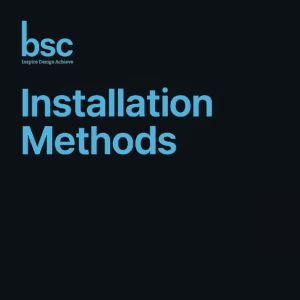
Vinyl flooring installation methods are flexible and offer several advantages, which can vary depending on the product and the specific application. Knowing the correct techniques will ensure a professional-looking result.
Floating / Click-Lock Installation
- The planks are joined together and then glued to the base.
- Advantages: Easy to make yourself; repairable; requires less glue.
- Disadvantages: It may move slightly; it needs space to expand.
Glue-Down Installation
- Adhesive is used to attach laminate or tile flooring to the subfloor.
- Advantages: Very durable; suitable for commercial areas or large rooms.
- Disadvantages: Can become dirty over time; difficult to remove; requires a clean and level subfloor.
Loose-Lay Installation
- Friction and weight hold heavy vinyl sheets or strips together.
- Advantages: Fast, requires less space, ideal for rental or temporary systems.
- Disadvantages: Do not use with heavy rolling loads if not properly secured.
Sheet Vinyl Welding
- A continuous waterproof surface is created by using heat to seal the seams.
- Advantages: Smooth, completely waterproof, ideal for bathrooms or laboratories.
- Disadvantages: Creating a clean, professional-looking seam can be difficult without experience.
Preparation Tips for All Methods
- Ensure that the subfloor is clean, level, and dry.
- Moisture testing helps prevent future warping or cracking.
- Pre-condition the vinyl planks/sheets according to the manufacturer’s instructions (typically 48-72 hours).
Knowing the different installation methods will help you choose the most suitable option for your needs. Consider factors such as ease of installation for DIY projects, durability for commercial use, or water resistance.
Prep Checklist Before Installation
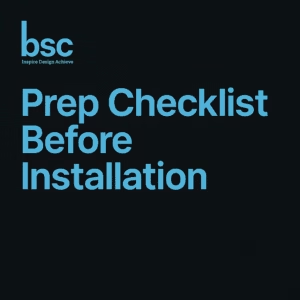
The secret to successfully installing vinyl flooring lies in proper preparation. Skipping any step can lead to problems such as cracks, uneven surfaces, or reduced durability. Here is a detailed checklist:
Measure & Order Extra
- Always plan for a floor area that is 5-10% larger than needed, as this will account for potential cutting, waste, and future repairs.
- This will prevent delays during the project and ensure a smooth and successful completion.
Inspect & Level the Subfloor
- Remove any debris, old adhesive, or raised areas.
- If there are any depressions or uneven spots on the surface, fill them in and smooth them out to ensure a completely flat surface.
- If the underlying surface is rough, you may hear noise when walking on the vinyl flooring.
Moisture Testing
- This is particularly important for concrete slabs. Use a moisture-measuring test or meter, such as one using calcium chloride.
- Before installation, any excess moisture must be reduced using a vapor barrier or sealant.
Remove Baseboards & Thresholds
- Allow some space around the moldings and door frames to accommodate vinyl expansion and contraction.
- Leave a small gap between the walls of adjacent rooms to ensure easy passage.
Acclimate Flooring
- Allow the planks or sheets to acclimatize in the room for 48-72 hours.
- After installation, they will not expand or warp due to temperature and humidity fluctuations.
Plan Layout
- Design the pattern so that there are no small pieces of vinyl left at the corners.
- Maintain a consistent spacing between the edges for aesthetic balance and structural stability.
DIY vs Pro: When to Call a Professional
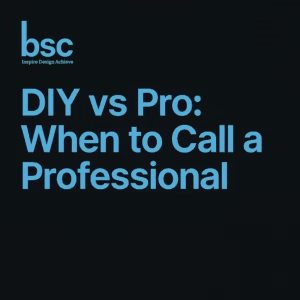
Installing vinyl flooring is generally quite easy, but whether you install it yourself or hire a professional, the quality of the work will be better, and you’ll save money in the long run.
DIY Installation Makes Sense If:
- You are using click-lock/floating vinyl planks.
- The room has a regular shape and minimal obstructions.
- The subfloor is flat, dry, and clean.
- You have the necessary basic tools (cutter, spacer, rubber mallet).
Advantages of DIY:
- It saves on labor costs.
- It provides greater flexibility in scheduling.
- If any damage occurs, replacing individual panels is not difficult.
Call a Professional When:
- Vinyl flooring is available in glue-down, sheet, or welded options.
- It is essential that the subfloor is properly leveled and free from moisture.
- Strict regulations must be followed in large commercial areas.
- To be eligible for the warranty, professional installation is required.
Advantages of Professionals:
- This ensures a strong, durable seal with excellent adhesion.
- It prevents errors that could lead to unevenness, bubbles, or water damage.
- Installation is quick and easy, even in complex designs or non-standard areas.
Quick Decision Checklist:
- Room size/shape – Complex layouts are best suited for professional installation.
- Floor type and vinyl type – Click-lock, sheet, or glue-down.
- Budget – Consider cost savings and the potential cost of a faulty installation.
- Warranty terms – Some products require professional installation to be eligible for warranty coverage.
Care, Cleaning & Stain Removal
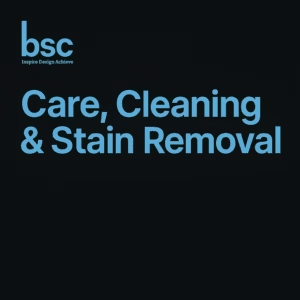
Vinyl flooring is easy to maintain, and with proper care, you can keep it looking beautiful and durable for many years.
Daily/Weekly Cleaning:
- Use a broom or vacuum cleaner (without the beater brush) to remove dirt and dust from the surface.
- Clean with a damp cloth using a cleaning agent recommended by the manufacturer; do not use excessive water.
- Place a doormat outside the door to prevent dirt, sand, and other debris from being tracked inside.
Stain Removal:
- Clean up any spills immediately to prevent stains.
- If there are any scratches, shoe marks, or ink stains, use a soft cloth with a mild, vinyl-safe detergent or cleaner.
- Do not use an abrasive pad, as this can damage the surface.
Do’s & Don’ts:
- Use a pH-neutral cleaner or a vinyl cleaner.
- Place protective pads on the furniture legs.
- Do not use wax, oil, soap, ammonia, or vinegar-based solutions, as these can damage the finish.
- Do not drag heavy furniture across the floor.
Periodic Care:
- For commercial VCT flooring, stripping and recoating are necessary (follow the manufacturer’s instructions).
- In the case of LVP/LVT flooring, regular cleaning is usually sufficient; occasionally, damaged tiles or strips may need to be repaired or replaced.
Extra Tips for Longevity:
- For flooring: Place a runner or rug in areas with heavy foot traffic.
- Trim your pet’s nails to prevent scratches.
- Do not place it in direct sunlight, as this will cause the color to fade.
Longevity, Warranties & What Affects Lifespan
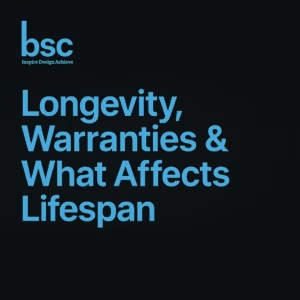
Vinyl flooring is designed for durability. Its lifespan depends on factors such as quality, installation, maintenance, and environmental conditions. Understanding its expected lifespan helps homeowners and businesses make informed investment decisions.
Expected Lifespan:
- Residential Vinyl (LVP/LVT/WPC/SPC): 10-25 years, depending on wear layer thickness and foot traffic.
- Sheet Vinyl: Typically 10-20 years; seam maintenance is crucial in wet areas.
- Commercial-grade VCT or LVT: 15-30 years with proper maintenance.
Factors Affecting Longevity:
- Subfloor Preparation: Uneven or damp subfloors can cause buckling, gaps, and premature wear.
- Traffic and Use: High-traffic areas require a thicker wear layer (20-30 mils).
- Moisture and Temperature: Excessive moisture or standing water can damage the adhesive or warp planks, especially if not waterproof.
- Maintenance: Regular cleaning with manufacturer-recommended products extends lifespan. Harsh cleaners and chemicals can damage the surface.
- Furniture and Heavy Items: Chairs, tables, or appliances without protective pads can leave marks or scratches.
Warranties:
- Residential Warranties: 10-30 years, covering wear, stains, and surface defects.
- Commercial Warranties: Shorter and more stringent, typically 5-15 years.
- Note: Warranties may include requirements for professional installation, adhesive use, and subfloor preparation.
Cost Breakdown & ROI — Budget to Premium Tiers
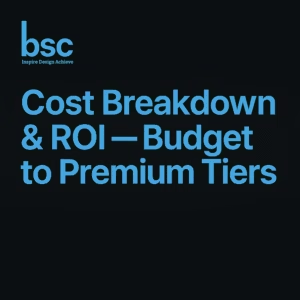
Vinyl flooring is a cost-effective option compared to hardwood, tile, or stone, but the price can vary significantly depending on the type, quality, and installation method. Understanding the cost and ROI helps in making an informed decision.
Material Costs (Approximate per sq. ft.):
- Budget sheet vinyl/basic LVP: $1.50-$3
- Mid-range LVP/LVT/SPC: $3-$6
- High-end LVP/LVT embossed or heavy-duty: $6-10+
Installation Costs:
- DIY click-lock floating floor: Minimal labor cost.
- Professional installation: $1.50 to $4+ per sq ft, depending on complexity.
- Glue-down or sheet welding: Higher labor cost due to adhesive and skill required.
ROI Considerations:
- Lower initial cost than natural materials: Vinyl can mimic expensive finishes at a lower price.
- Durability and low maintenance: Reduces replacement and maintenance costs over time.
- Property value: High-quality vinyl enhances interior aesthetics and resale value.
- Commercial applications: Lower maintenance and longer lifespan result in lower operating costs compared to VCT or hardwood.
Tips to Maximize ROI:
- Choose a heavy-duty wear layer for high-traffic areas.
- Select rigid core SPC/WPC for wet or high-traffic areas.
- Prioritize aesthetics, durability, and warranty protection for long-term savings
Environmental, Health & Recycling Considerations
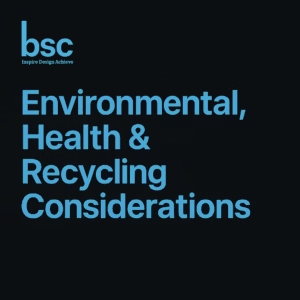
Vinyl flooring is very durable and practical, but understanding its environmental and health impacts helps consumers make informed decisions.
Environmental Considerations:
- Vinyl is a PVC material, typically containing plasticizers and additives.
- Newer products reduce harmful chemicals and VOC emissions.
- Choose products with certifications like FloorScore or GREENGUARD for phthalate-free and low-VOC content.
Health Considerations:
- As a low-VOC product, vinyl flooring doesn’t negatively impact indoor air quality.
- Its easy-to-clean surface reduces allergens and bacteria.
- Proper installation and maintenance prevent mold or mildew under the planks in damp areas.
Recycling & Sustainability:
- Vinyl is technically recyclable, but recycling facilities are limited.
- Some manufacturers offer take-back programs for old flooring.
- Recycled products reduce environmental impact.
- Sheet vinyl can sometimes be recycled into mats or industrial flooring.
Tips for Eco-Friendly Choices:
- Choose certified low-VOC products to maintain good indoor air quality.
- Check the recycled content in rigid core planks.
- Dispose of old vinyl responsibly through manufacturer programs or recycling centers.
Common Problems & How to Fix Them
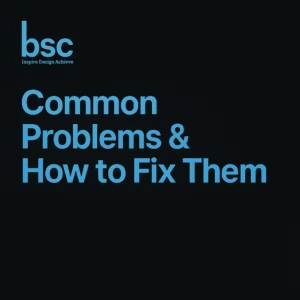
Even with high-quality vinyl flooring, problems can occur if installation, maintenance, and use are not done correctly. Knowing about common issues and their solutions is one way to extend the life of your floor.
- Gapping or Buckling
- Cause: Moisture, poor subfloor preparation, or lack of expansion gaps.
- Solution: Remove the affected planks, dry and level the subfloor, and reinstall with proper expansion gaps.
- Scratches & Dents
- Cause: Heavy furniture, sharp objects, or pet claws.
- Solution: Touch up minor scratches with a manufacturer-recommended kit; replace planks when the top layer is damaged. Use felt pads under furniture and place rugs in high-traffic areas.
- Peeling or Lifting Edges (Glue-Down Vinyl)
- Cause: Poor adhesive or a dirty subfloor.
- Solution: Clean the subfloor, apply a suitable adhesive, and press the planks firmly. For serious problems, contact a professional.
- Stains or Discoloration
- Cause: Failure to clean spills promptly or chemical reactions from cleaners.
- Solution: Clean spills immediately; if stains are stubborn, use a vinyl-safe cleaner. Avoid harsh chemicals and abrasive pads.
- Curling or Warping
- Cause: Excessive moisture or direct exposure to heat.
- Solution: Maintain proper humidity levels, avoid standing water, and keep heat sources at a safe distance.
Tarkett Vinyl Flooring & BSC Interiors
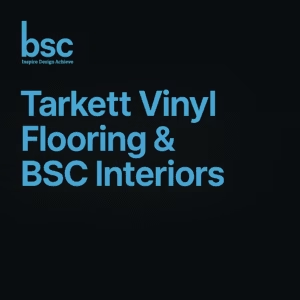
Tarkett is a globally renowned brand for quality and innovation in vinyl flooring solutions. Tarkett vinyl flooring offers a wide range of designs, textures, and performance features, making it the ideal flooring choice for residential and commercial spaces, thanks to its durability, aesthetics, and eco-friendliness. Key features of Tarkett vinyl flooring include:
Key Features of Tarkett Vinyl Flooring:
- Waterproof and durable: SPC and LVP are highly resistant to moisture and wear.
- Design variety: Realistic wood, stone, and abstract designs with embossed textures for a natural look.
- Comfort and sound control: WPC and cushioned vinyl options are available, reducing noise and providing comfortable footing.
- Low maintenance: Easy to clean and maintain, suitable even for high-traffic areas.
- Eco-friendly products: Many Tarkett products are low-VOC, phthalate-free, and partially recyclable.
BSC Interiors – Authorized Distributor:
BSC Interiors is the leading distributor of Tarkett vinyl flooring in India, offering:
- The largest collection of Tarkett’s commercial and residential products.
- Expert advice to help you choose the right product based on room type, traffic, and aesthetic needs.
- Installation, maintenance tips, and warranty registration services.
- Fast delivery and excellent service across major cities in India.
Why Choose Tarkett x BSC Interiors:
- Premium flooring with a genuine warranty.
- Trust and reliable service from a trusted distributor.
- The perfect combination of international quality (Tarkett) and local expertise (BSC Interiors).
Conclusion: Why Vinyl Flooring is the Smart Choice
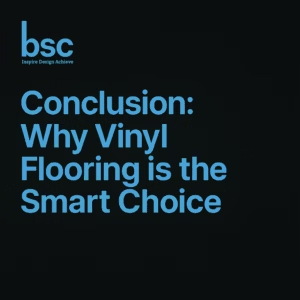
Vinyl flooring has proven to be a flexible, durable, and attractive flooring product suitable for both homes and commercial spaces. Its waterproof properties and wide range of designs make it both practical and aesthetically pleasing, something that cannot be said for many other flooring materials.
Key Takeaways:
- Longevity and durability: With proper maintenance and installation, vinyl flooring can last 10-25 years, even in high-traffic areas.
- Water and stain resistance: Rigid-core SPC, WPC, and sheet vinyl are resistant to moisture and everyday stains.
- Design versatility: Vinyl flooring can mimic the look of hardwood, stone, tile, and modern abstract designs, making it suitable for any interior design style.
- Easy and quick maintenance: It’s easy to clean, saving time and money, and repairs are also simple.
- Affordability: Vinyl offers a high-quality look at a fraction of the cost of hardwood or natural stone, providing good value for homeowners and businesses.
Additional Benefits:
- Comfortable underfoot and sound-absorbing WPC or cushioned vinyl flooring.
- A sustainable option, environmentally friendly, low VOC, and recyclable.
- Multiple installation options – click-lock, glue-down, loose-lay, or welded sheets – suitable for any DIY or professional project.
In short, vinyl flooring is the best choice for style, durability, and practicality. Vinyl flooring delivers long-lasting performance for transforming your home, designing a commercial office, or for installation in wet areas, all while maintaining a beautiful appearance.
So let’s transform your floors today!
Contact BSC Interiors now or visit our showroom to explore the full range and get expert advice. Make the smart choice—buy your vinyl flooring from BSC Interiors and experience quality that lasts!
